"Release: to be announced"
“In the Name of Jerusalem II” is the direct successor of “In the Name of Jerusalem” for Warband (Moddb.com). As in INJ, INJ2’s main focus lies on the Near East of the late 12th century. The campaign still starts in the year 1187 and will include scripted events until the fall of Constantinople in 1204 and its immediate aftermath.
Compared to INJ2 there will be many changes and improvements: while INJ was heavily inspired by the movie “Kingdom of Heaven”, INJ2 strives for a more historically accurate experience in terms of weapons and armours, characters, heraldry and settlements. The campaign map will be more thoroughly researched and larger, now stretching from Trebinje (Bosnia) in the west to Erbil (Iraq) in the east and from Drastar (Bulgaria) in the north to Asyut (Egypt) in the south. Consequently, there will be five new factions: Serbia, Bulgaria, the Saltuqids, the Artuqids of Harput and finally the Ahlatshahs. In the future, when we are satisfied with the current version, we might expand the map into the Caucasus, lower Mesopotamia and western Iran, allowing us to include Georgia, the Eldiguzids, the Abbasids and maybe the Seljuks of Hamadan.
Follow us on Discord (Discord.com) or Youtube (Youtube.com)!
Greetings, warriors of Jerusalem! Unlike the first installment of In the Name of Jerusalem for Warband, INJ2 will have a campaign map that covers the southern half of the Balkan peninsula. This allows us to depict the Balkan phase of Emperor Barbarossa’s crusade (which almost erupted into a full-blown war with the Byzantines), various anti-Byzantine revolts, the disaster that was the 4th crusade and the ambitions of the two young states of Serbia and Bulgaria. The latter will be included as two, brand new factions, striving to exploit the weakness of the Byzantines to expand their own domains. It is the nascent Tsardom of Bulgaria, ruled by the two brothers Ivan and Peter, to which we dedicate today’s devblog.
The Tsardom of Bulgaria was founded during an anti-Byzantine revolt in 1185, just two years before the start date of our mod and lasted until 1396. In modern historiography it is also known as “Second Bulgarian Empire”, succeeding the earlier Bulgarian state that was Byzantium’s greatest rival in the Balkans in the 9th and 10th centuries. Let us take a brief look at the history of the first Bulgarian realm, the Byzantine occupation that followed its fall and the first two years of the neo-Bulgarian state created by Ivan and Peter, before finally taking a peak at its military.
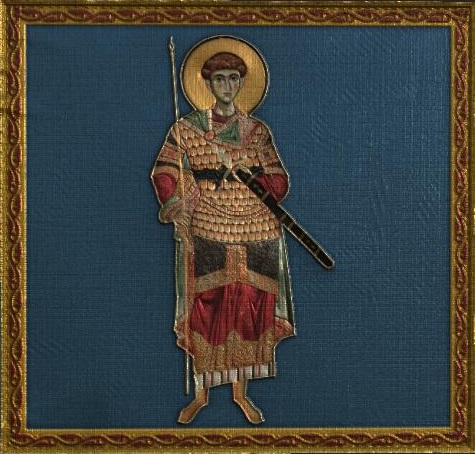
Fig. 1) St. Demetrius, our Bulgarian faction symbol
1.1: THE RISE AND FALL OF THE FIRST BULGARIAN EMPIRE (681-1018)
The Bulgars, a heavily mixed steppe people related to the Huns and Avars, had crossed the Danube in the late 7th century and established themselves north of the Balkan mountains, the Haimos, organized in a state with its capital at Pliska. Relations with the struggling Byzantine Empire to the south were initially amiable, in fact the Bulgars even helped it when the Arabs besieged Constantinople in the early 8th century. Yet, war was inevitable when more ambitious Kanasubigi (a Bulgar variant of Khan) challenged the Byzantines in Thrace and Macedonia. The first was Kanasubigi Krum (803-814), who conquered Triaditza (Sofia), Mesembria (Nesebar) and Anchialos and pillaged Thrace as far as the outskirts of Constantinople. He is also infamous for killing Emperor Nikephoros (802-811) and turning his skull into a drinking goblet. Omurtag (814-831) preferred peace with Constantinople, instead dedicating himself to the expansion along the Middle Danube (then Avar territory) and the foundation of the town of Preslav, which would eventually become the new Bulgarian capital. His successor Boris (852-888) is famous not only for conquering northern Macedonia as far west as Ohrid, but even more so for converting to Christianity. This allowed the merging of the Bulgars and Slavs into a new people, the Slavic Bulgarians, and the development of an indigenous Slavic church.

Fig. 2) The Bulgarian victory at Anchialos, 917 AD
After Boris came Simeon (893-927), arguably the most successful Bulgarian ruler. He utterly crushed the Byzantines in warfare, reduced them to tributaries and occupied much of the western Black Sea coast and inland Thrace and Macedonia, essentially restricting Byzantium to the Mediterranean coastline. He also vassalized Serbia, defeated and expelled, together with his Pecheneg allies, the Magyars to Pannonia and attempted to conquer Croatia, albeit in vain. In 913 he forced the Byzantines to crown him Emperor, or Tsar. With his death in 927, the first Bulgarian empire had reached its apogee. Most Tsars after Simeon lacked his skill, the country was ravaged by Magyar and Rus invaders and further destabilised by the Bogomil sect. Meanwhile, the Byzantines were regaining their strength, ceasing to pay tribute in 965/6 and eventually overrunning Preslav (subsequently renamed to Ioannopolis) and all of northeastern Bulgaria in 971. Tsar Samuel (997-1014) and his brothers, now resident in Ohrid, managed to put up a fierce resistance, reconquering all lost territories. However, the mighty Emperor Basil finally directed his attention to the Bulgarian problem in the year 1000, overrunning Bulgaria proper, while the Bulgarian rumpstate in Macedonia was finally conquered in 1018. Following his crushing victories, Basil II adopted the grim title “Bulgarslayer”.
1.2: THE BYZANTINE OCCUPATION (1018-1185)
Following their victory, the Byzantines integrated the domains of Samuel’s empire into their provincial theme system. The heart of the empire before 971 around Preslav and Dristra was turned into the theme of Dorostolon (Dristra), also known as Paristrion (“the lands beside the Danube”). Meanwhile, the base of Samuel’s state, between Branchevo and Vidin in the north, Nis in the west, Triaditsa (Sofia) in the east and Ohrid and Kostoria in the south, became the theme of Bulgaria. Finally, Basil II also established the small theme of Sirmium between Sirmium and Belgrade. The pre-Byzantine ecclesiastical structure remained intact, although the Bulgarian patriarchate of Ohrid, which exercised its influence over all of Bulgaria, was reduced to an archbishopric subordinate to the emperor (not the patriarchate of Constantinople).
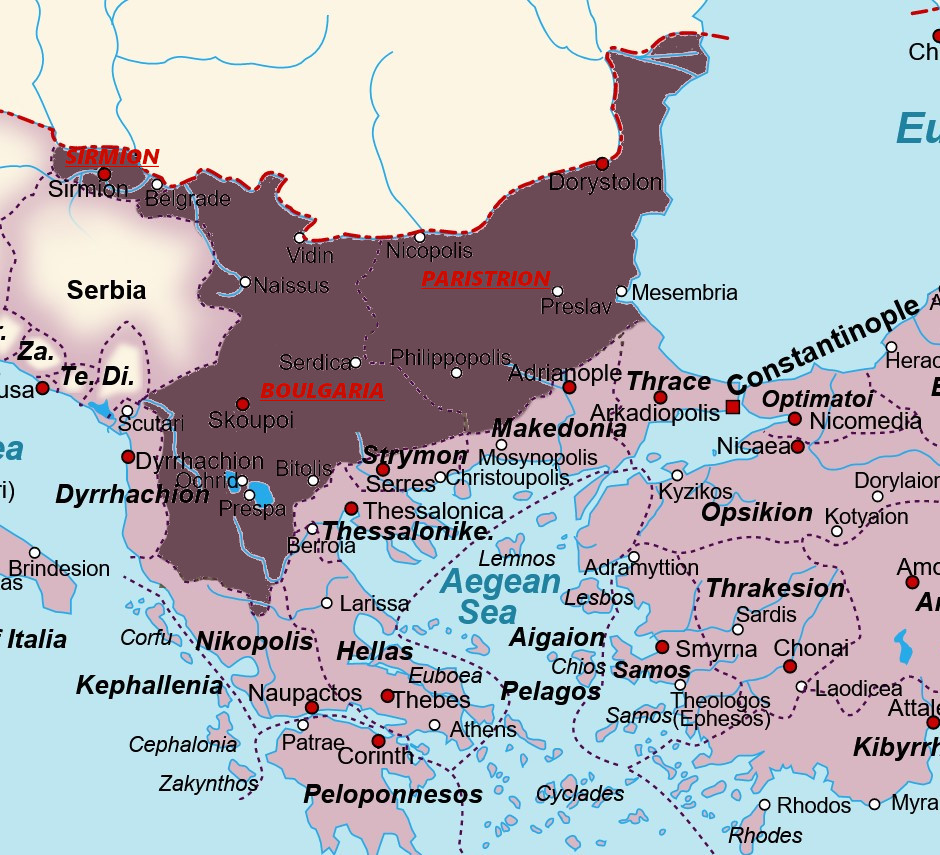
Fig. 3) The first Bulgarian Empire as part of the Byzantine theme system
Emperor Basil II died in 1025. His successor proved to be less tolerant, initiating a policy of hellenization. The Bulgarian archbishop was deposed and replaced by a Greek archbishop without consulting any Bulgarian bishops beforehand. In the late 11th century the Greek archbishop Theophylact had many Slavic schools closed, forbade Slavic-language services in favour of Greek ones and encouraged the translation of local Slavonic texts into Greek. It is likely that Slavonic manuscripts were systematically destroyed in this period. This policy resulted in a drastic decline of Bulgarian spiritual culture. This suppression and consequential decline of Bulgarian culture under the Byzantines greatly resembled the one that would occur under the rule of the Ottomans (1396-1878).
Understandably, the Bulgarians weren’t exactly fond of the Byzantine occupation, especially if one also considers the heavy tax burden imposed on them. This disgruntlement erupted into several rebellions. The first one was led by Peter Delian, who claimed to be a son of Tsar Gabriel Radomir (1014-1015). He overran much of the Bulgaria theme between 1040 and 1041, but was betrayed by his cousin Alusian, who blinded and deposed Peter and made peace with the Byzantines. Another unsuccessful revolt happened in 1072, when the Bulgarian George Vojtech attempted to create a new Bulgarian empire ruled by a Serbian noble from Zeta. In the same year, in Paristrion, Turkic Pechenegs allied with the local Bulgarians to push the Byzantines beyond the Haimos. They maintained their independence until they were crushed in 1091, but much of the province, from now on called Paradunavon, was devastated and suffered even further due to repeated Pecheneg and later Cuman incursions. To save money, garrisons were reduced to a bare minimum, primarily stationed in fortified mountain towns like Preslav, Lovech or Tarnovgrad. To the west, the Bulgaria theme was divided into several smaller themes to better counter the repeated Hungarian incursions that occurred from the late 11th century onwards. However, as long as the competent Komnenian emperors Alexios I (1081-1118), John I (1118-1143) and Manuel I (1143-1180) ruled, the situation remained largely stable.
1.3: The resurrection of the Bulgarian Tsardom by Peter and Ivan
Emperor Manuel I, arguably the mightiest Byzantine emperor since Basil II, died in 1180 and was followed by the underaged Alexios II (1180-1183), the brutal Andronikos I (1183-1185) and finally Isaac II (1185-1195), who established the infamous Angelos dynasty. Probably in 1183 the Hungarians tested their luck once again and pushed as far as Nis and Triaditsa, but Isaac II managed to retain all lost territories except for Sirmium after agreeing to marry the Hungarian princess Margareta in 1185. Royal weddings were a costly affair, especially if one is also confronted with a massive Sicilian invasion heading straight to Constantinople. As a result, Isaac II raised the taxes, causing severe unrest among the Bulgarians and Vlakhs in the Haimos as far east as the outskirts of the town of Anchialos.

Fig. 4) Our interpretation of Tsar Peter and Ivan Asen
In October 1185, two local noblemen named Theodore and Ivan (also known by his family name Asen) travelled to Isaac’s encamped army near Kypsela, ready to meet the invading Sicilian army near Thessaloniki. According to the Byzantine historian Nicetas Choniates (our main source for the Bulgarian rebellion), it was Theodore and Ivan who organized the unrest in the Haimos Mountains. Very little is known about their background, even their ethnicity is disputed. That they (and their smaller brother Kaloyan, who would rule between 1197 and 1207) thought of themselves as Bulgarians, or at least saw themselves in the tradition of Bulgarian tsars, is reflected in their later seals and letters sent to the pope, while foregin accounts, especially that of Niketas Choniates, refer to them as Vlakhs, Romanian-speaking nomads who lived throughout much of the Balkan peninsula. Their family name Asen suggests links with the Turkic-speaking Cumans. In any case, both were granted an audition with the emperor. They demanded not that the taxes be lowered, but that they were granted a pronoia (an estate allotted to noblemen in exchange for military service) in the vicinity of the Haimos. After Isaac refused they grew angry and threatened with war, resulting in Ivan being struck in the face. Why Isaac denied their request is not entirely clear. Did he severely misjudge the situation, incapable of seeing that he was threatened by a war on two fronts? Or had the brothers even more conditions which were not recorded and were simply not acceptable for Isaac, like perhaps demanding the title duke of Paradunavon? And why did Isaac simply allow them to return to Bulgaria despite their threats? What is clear is that the humiliated brothers returned to the Haimos. War was now inevitable.

Fig. 5) Early Bulgarian seals: I) Tsar Peter (1185-1197) II) Tsar Ivan (1185-1196) III) Tsar Kaloyan (1197-1207) IV) Tsar Boril (1207-1218)
While Isaac crushed the Sicilians in southern Thrace, Theodore and Ivan were busy organising the rebellion. They chose their residence to be the mountain fortress of Tarnovgrad, a town with a virtually unknown history before the rebellion, but by 1185 it apparently had the mightiest fortifications in the entire Haimos. In the beginning, Theodore’s and Ivan’s rebels seemed to have had a rather low morale, hence Theodore, the older of the two brothers, tried to boost it with two measures: first he crowned himself tsar (his brother likely acted as co-ruler) and adopted the name Peter, second he built a shrine dedicated to St. Demetrios with icons stolen from Thessaloniki. The message propagated therein: God had forsaken the Byzantines and independence was assured if the Bulgarians and Vlakhs of the Haimos only fought. The first Bulgarian campaign, the capture of Preslav, was a failure, hence they resorted to raiding Byzantine towns near the Haimos.

Fig. 6) The church of St. Demetrius in Tarnovgrad (20th-century reconstruction)
In spring 1186, Isaac raised a new army to crush the nascent Bulgarian state. It seemed to go well for the empire: a solar eclipse helped the imperials to sneak into the mountains undetected, causing the badly organised Bulgarians to abandon their posts and flee towards the Danube. Unopposed, the Byzantines burned the country’s crops and entered the towns, including Tarnovgrad and the church of St. Demetrios, taking its icons back to the empire. Thus, not even a year since its beginning, the uprising was about to be easily brushed aside, being an even greater failure than the 11th-century revolts of Peter Deljan and George Vojtech. However, St. Demetrios had certainly not forsaken the Bulgarians just yet. While Isaac returned back to Constantinople, leaving at best a skeleton garrison behind, Peter and Ivan had crossed the Danube and entered the lands of the Cumans, who ruled a vast albeit loosely organised steppe empire that stretched as far east as Lake Aral. Here, Peter or his youngest brother Kaloyan, still a minor at that time, likely married the daughter of some powerful chief (the only way to acquire a permanent friendship with the Cumans), promising rich booty. Thousands of the nomads joined the brothers upon their return.
Back in Bulgaria, they easily evicted the Byzantine garrison left by Isaac and resumed their raids. Emboldened by Isaac’s passivity, the defeat of a smaller Byzantine army led by sebastokrator John Kantakouzenos and the capture of its banners and possibly an alliance with the imperial rebel Alexios Branas and Stefan Nemanja of Serbia, Peter and Ivan were dreaming of expanding their domains and resurrecting the massive Bulgarian empire of old, if not the conquest of Constantinople itself (the Ansbert chronicle noted that in 1189, Peter dreamed of acquiring the “imperial crown of the kingdom of the Greeks”, while seals attributed to Peter bore the title “basileus Rhomaion”). As of early 1187, the Bulgarian state probably covered the entirety of the Haimos, now also including Preslav. Unlike a year ago it also extended towards the Danube. In the west it reached as far as the eastern outskirts of the Carpathians, including the town of Vidin. To the east it reached to or near the mouth of the Danube (according to a letter recorded in Ansbert’s chronicle, Bulgaria ruled over the mouth of the Danube, although Byzantine seals of Isaac discovered in nearby Isaccea have been linked with a planed naval operation in 1190, implying that this settlement held out for a few years longer). It remains unknown in whose hands the few Black Sea towns north of Varna (which was still Byzantine) like Constanteia or Karvuna were.
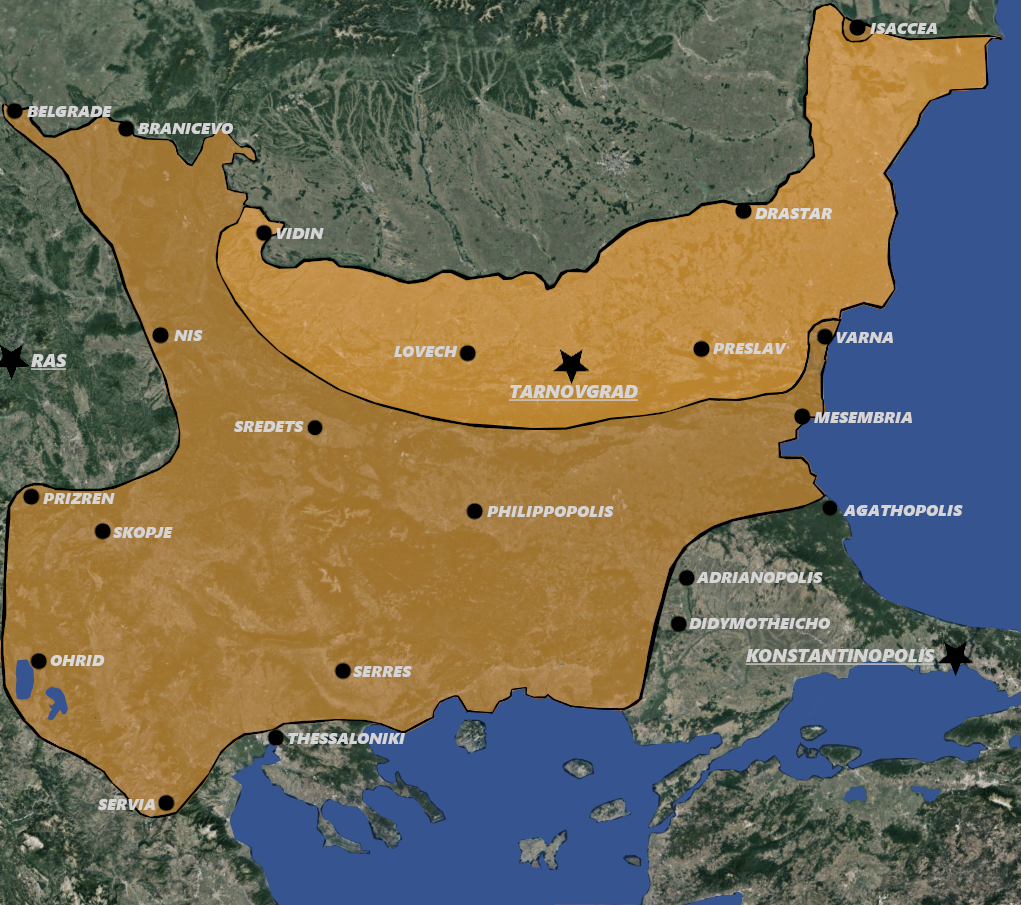
Fig. 7) Yellow: Bulgaria in 1187; Orange: Bulgaria in 1207
The Bulgarians may have lost the icon of St. Demetrios, yet they remained convinced that he stood at their side, especially now that they could field the mighty Cuman warriors. Isaac won’t be able to tolerate the Bulgarian raids much longer, he will return after he dealt with the on-going rebellion of Alexios Branas. Can you consolidate the tsardom, shake off the imperial tyranny and resurrect the empire of old by bringing the war to the enemy and liberating the Bulgarians of Thrace? Can you even surpass it by conquering Contantinople, the “queen of cities”, and by proclaiming yourself “tsar of Bulgarians and Greeks” like tsar Ivan Asen II (r. 1218-1241) did? Whatever you choose to do: may St. Demetrios bless you in your struggle for the glory of the Bulgarian tsardom.
2: THE BULGARIAN ARMY

Fig. 8) A Bulgarian standard bearer
As of 1187, the tsardom of Bulgaria is still consolidating and so is its army. It was still rudimentarily organised and more suited for raiding villages and small towns than conquering cities, a process that didn’t begin until the turn of 1190 and dramatically kicked off under tsar Kaloyan the “Romanslayer” (1197-1207), although Byzantine historian George Akropolites noted that even then the Bulgarians were subpar besiegers. The structure of the Bulgarian army of the late 12th and early 13th centuries remains poorly understood, although it was heavily inspired by that of Byzantium, while also retaining its Slavic identity. The great commander of the army was of course the tsar himself, while immediately below him stood the major general, the velik voivoda. Another high-ranking military office was that of the velik duk, although its concrete purpose is unknown. On a provincial level we find the katepan, although, again, we do not know what his tasks were. On a regional level was the kephalia, who exercised both civilian and military authority with the help of a desetnik.
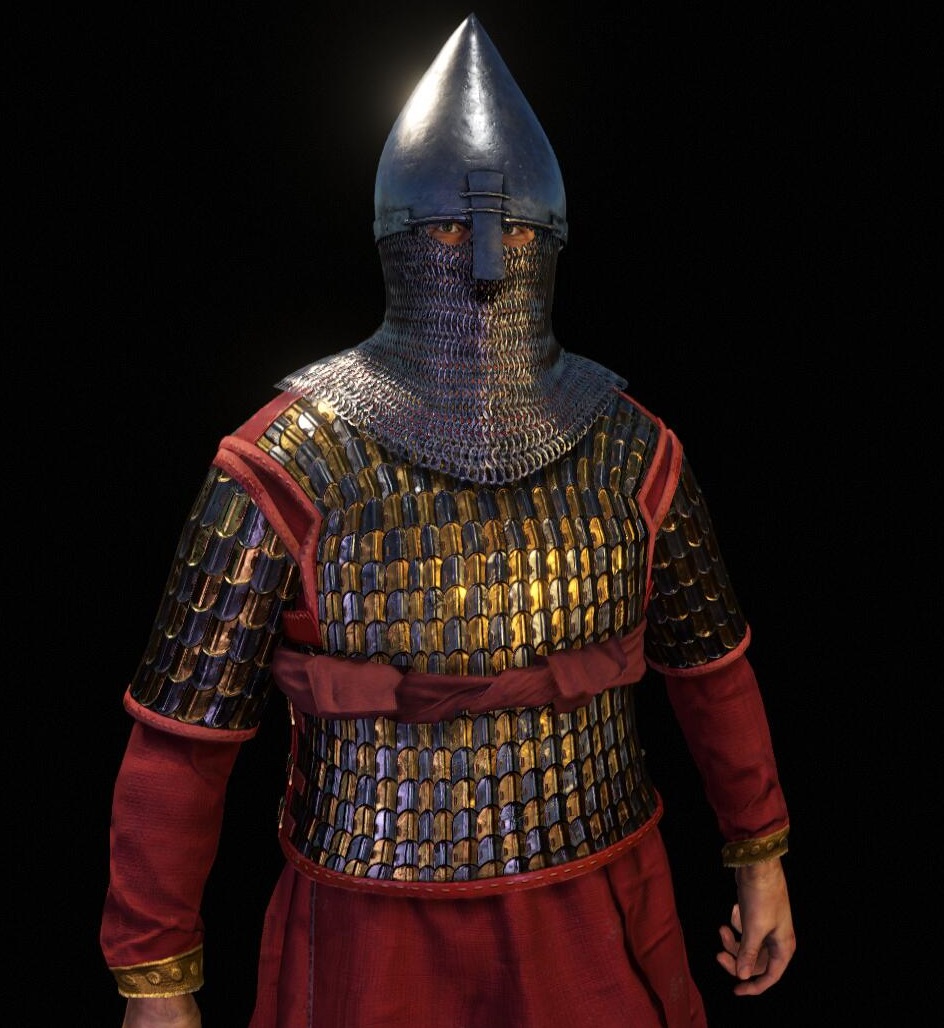
Fig. 9) A Bulgarian bolyar
In INJ2, you will find your typical army consisting of three different components. The sedentary Bulgarians will provide the mainstay (voini) of your forces: light infantry, light cavalry and archers. Your feudal noblemen, the bolyari, will bring their companions, the druzhina, to the battlefield, acting as heavy cavalry. Since the Byzantines severely depleted the numbers of the bolyari by resettling them to other parts of the empire, the druzhina will be available in very few numbers to reflect that fact. Heavy infantry will also be available, though limited in number and of inferior quality compared to that of the Byzantines.
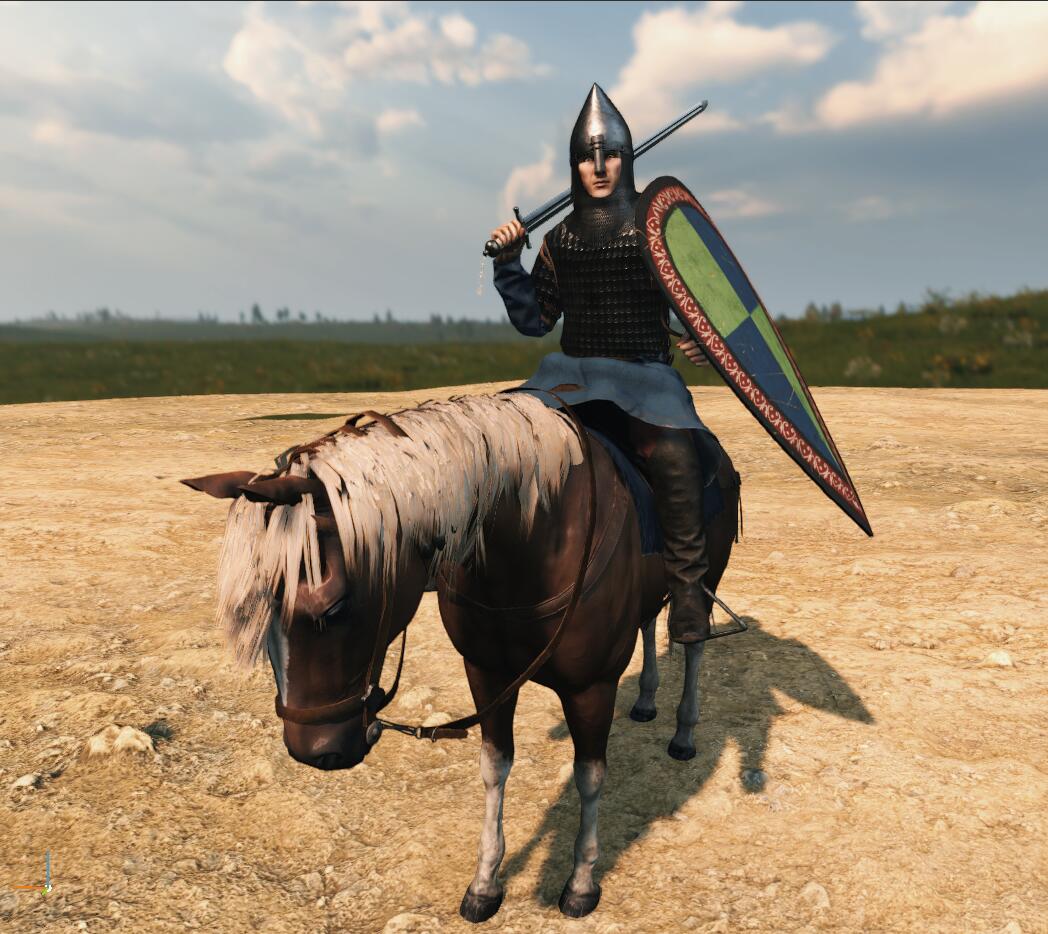
Fig. 10) A Bulgarian druzhina
The second component will be the Vlakhs, wild but lightly armoured warriors who live a harsh life as pastoralists breeding livestock. These wool-clad clad warriors are extremely skilled in skirmish and ambush tactics and are led by their mounted chiefs, the knyez, who wear basic mail armour.
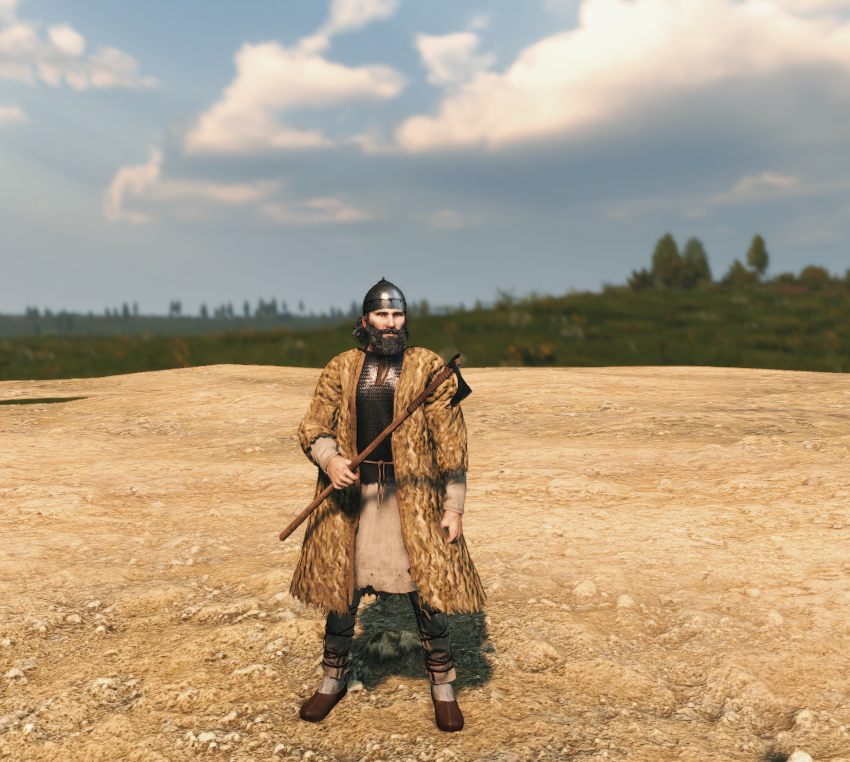
Fig. 11) A Vlakh knyez
Finally, you will be able to field powerful Cuman cavalry, mostly fighting as light horse archers. The close Asenid connection established with various Cuman chiefs (beys) allows you to field them in far greater numbers than your Byzantine rivals, who traditionally hired them as mercenaries on occasion. The problem for the Bulgarians will be that the Cumans only crossed the Danube during winter, as they pastured their horses north of it during summer. Therefore, your most powerful troops will only be available for six months per year. Consider your strengths and weaknesses to overcome the overwhelming might of the Byzantine empire.
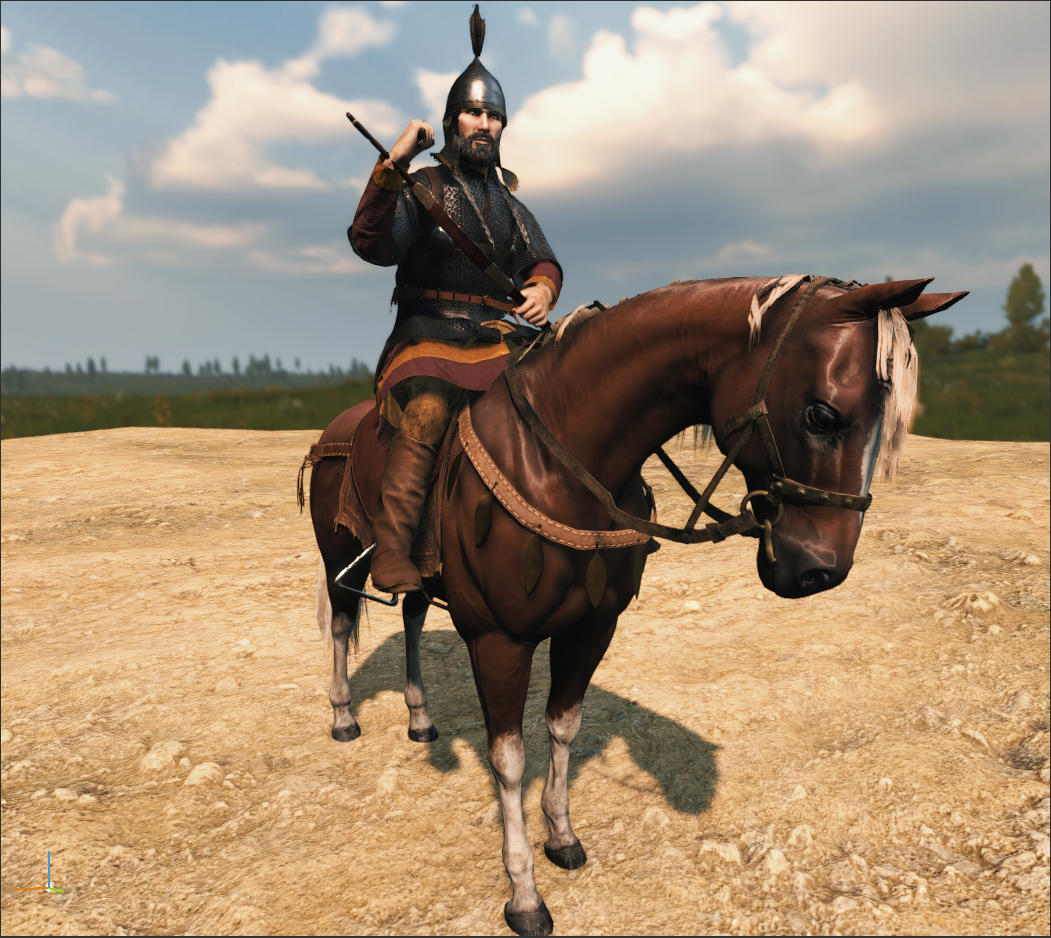
Fig. 12) A Cuman bey
Raid them, devastate their economy, watch them tear themselves to pieces in their endless civil wars and when the time is ripe, set out to conquer a Bulgarian empire worthy of Rome!

INJ2 Devblog (6) Ayyubid Sultante——History
News 9 commentsGreetings, warriors of Jerusalem! INJ2 by Team Century will be a historically accurate mod. We hope our players can enjoy the game as well as experiencing...

INJ2 Devblog (5) Eastern Roman Empire——History
News 5 commentsThis blog is based on historical settings; all the storylines are not fictitious. If there is any mistake, please tell us in the comment section.

INJ2 Devblog (4) Sultanate of Rum——History
News 27 commentsGreetings, warriors of Jerusalem! INJ2 by Team Century will be a historically accurate mod. We hope our players can enjoy the game as well as experience...

INJ2 Devblog (3) Kingdom of Jerusalem——Knight
News 5 commentsGreeting, warrior of Jerusalem!Let's talk about knight, the most commonly mentioned topic in medieval europe and crusade.














Please release a beta for us! We need this!
Thank you for your passions and please be patient :), our team members are working hard in their free time to developing contents and new features constantly.
can you still talk to lords that speaks a different language or will there be a translator companion feature
We have this design and we have implemented it. In the game, all dialogues have a language difficulty rating that you must master before proceeding. You can learn the basics of a language by staying at a friendly foreign city, or recruit a companion who understands both your language and a foreign language and learn it from this man/woman.
There is translator companion feature, but they can only translate when they knows both language. Currently it only works in the communication ui interface when you click and directly talks to a person in town/army/etc.
This comment is currently awaiting admin approval, join now to view.
team century...please
This comment is currently awaiting admin approval, join now to view.
Why cant i downlad it. I really wanna play this masterpiece
It is still WIP and not been published yet.